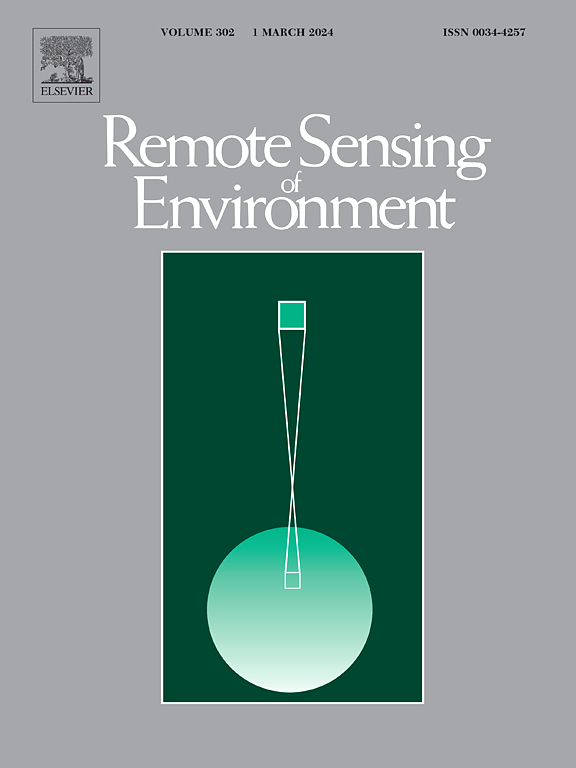全球夜间灯光的定量表征:一种基于辐射通量和SNPP-VIIRS数据测量能量强度的方法
IF 11.1
1区 地球科学
Q1 ENVIRONMENTAL SCIENCES
引用次数: 0
摘要
夜间光遥感已成为研究人类活动及其对环境影响的重要工具。然而,准确和定量地测量NTL仍然是一个挑战。在这项研究中,我们建议使用辐射通量作为NTL能量强度的更精确测量,它同时考虑了辐射和图像像素面积。为了实现这一目标,我们基于SNPP-VIIRS数据集建立了从辐射强度到辐射通量的转换模型,并计算了2022年全球辐射通量图。在全球50个具有代表性的城市对模型进行了验证,验证了模型的合理性和准确性。辐射通量的使用更直观地反映了NTL能量强度,并消除了由像素区域变化引起的系统误差。这项研究强调了使用NTL定量测量的重要性,并强调了利用NTL辐射通量进一步评估社会经济参数和生态影响的潜力。本文章由计算机程序翻译,如有差异,请以英文原文为准。
Quantitative characterization of global nighttime light: A method for measuring energy intensity based on radiant flux and SNPP-VIIRS data
Nighttime light (NTL) remote sensing has become an important tool to study human activities and their impact on the environment. However, accurately and quantitatively measuring NTL has remained a challenge. In this study, we propose using radiant flux as a more precise measure of NTL energy intensity, which takes into account both radiance and image pixel area. To achieve this, we develop a conversion model from radiance to radiant flux based on the SNPP-VIIRS dataset and calculate the global radiant flux map for 2022. A validation of the model was conducted in 50 representative cities worldwide, confirming its rationality and accuracy. The use of radiant flux provides a more intuitive reflection of NTL energy intensity and eliminates system error caused by variations in pixel areas. This research emphasizes the importance of using a quantitative measurement for NTL and highlights the potential for further evaluation of socio-economic parameters and ecological impacts using NTL radiant flux.
求助全文
通过发布文献求助,成功后即可免费获取论文全文。
去求助
来源期刊

Remote Sensing of Environment
环境科学-成像科学与照相技术
CiteScore
25.10
自引率
8.90%
发文量
455
审稿时长
53 days
期刊介绍:
Remote Sensing of Environment (RSE) serves the Earth observation community by disseminating results on the theory, science, applications, and technology that contribute to advancing the field of remote sensing. With a thoroughly interdisciplinary approach, RSE encompasses terrestrial, oceanic, and atmospheric sensing.
The journal emphasizes biophysical and quantitative approaches to remote sensing at local to global scales, covering a diverse range of applications and techniques.
RSE serves as a vital platform for the exchange of knowledge and advancements in the dynamic field of remote sensing.
 求助内容:
求助内容: 应助结果提醒方式:
应助结果提醒方式:


